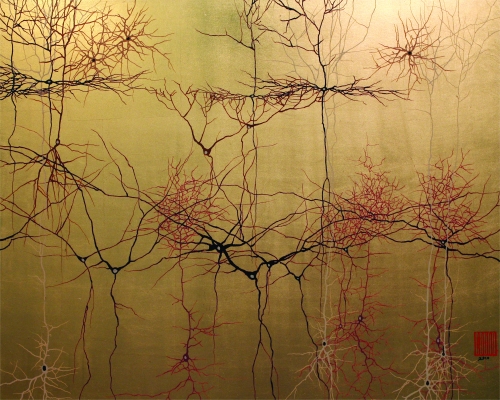
If you haven’t heard that Buddhist mindfulness meditation can change your brain for the better, you haven’t opened a magazine or newspaper lately. On the other hand, if you haven’t heard that research supporting such a claim is at best inconclusive, you can’t be blamed—it’s not a view you’re likely to come across as readily.
The ongoing story of the convergence of Buddhist practice and science—lately and most notably, neuroscience—has garnered a lot of press, and the popular narrative has been overwhelmingly weighted in favor of those who argue that Buddhism’s rationalist bent makes it, of all religions, uniquely compatible with scientific truths. But as is evident in this issue of Tricycle, a strong counternarrative has begun to emerge. In “A Gray Matter,” Columbia professor of Japanese religion Bernard Faure writes that a “careful and critical reading of the literature on Buddhism and neuroscience will lead, I think, to a far more sober assessment of their convergence than one generally hears from its advocates.”
Aside from questioning the science itself, Faure challenges the highly selective reading of Buddhism upon which the supposed convergence is based: The convergence of Buddhism and science is, Faure argues, largely a consequence of modern Buddhists—in both Asia and the West—having radically redefined the tradition for that specific purpose.
This notion of convergence has been around since the 19th century. In this issue’s “The Scientific Buddha,” adapted from his new book of the same name, University of Michigan professor Donald S. Lopez, Jr., a Tricycle contributing editor, focuses on the history of the dialogue between Buddhism and science and how it came to assume its present form. Lopez observes:
For the Buddha to be identified as an ancient sage fully attuned to the findings of modern science, it was necessary that he first be transformed into a figure who differed in many ways from the Buddha who has been revered by Buddhists across Asia over the course of many centuries. . . . [19th-century] European scholars, many of whom never met a Buddhist or set foot in Asia, created a new Buddha, a Buddha made from manuscripts. This was the age of the quest for the historical Jesus. European philologists set out on their own quest for the historical Buddha, and they felt they found him. It was this Buddha, unknown in Asia until the 19th century, who would become the Buddha we know today, and who would become the Scientific Buddha.
While both Faure and Lopez take a critical view of the exchange between Buddhism and science, their criticism is predicated on the belief that this dialogue is nonetheless necessary and—if some of the deep misconceptions that have shaped it are cleared up— potentially fruitful. But as these two scholars demonstrate, our erroneous views run deep. Perhaps the most significant difficulty is not so much a specific idea as it is the model that guides us. The Buddhism and science dialogue has been shaped by a model of comparison that sees the finding of agreement—convergence—as the most beneficial and desirable avenue to pursue. But as Faure writes, a comparative model based on mutual challenge might well shed more light on both Buddhism and science:
“Convergence may never be reached, and that is likely for the best, because it is difference, and the challenges it presents, that is the richer source of understanding.”
—James Shaheen, Editor and Publisher
Read Bernard Faure’s “A Gray Matter” here.
Read Donald S. Lopez’s “The Scientific Buddha” here.
Check out the entire Winter 2012 issue here.
Thank you for subscribing to Tricycle! As a nonprofit, we depend on readers like you to keep Buddhist teachings and practices widely available.